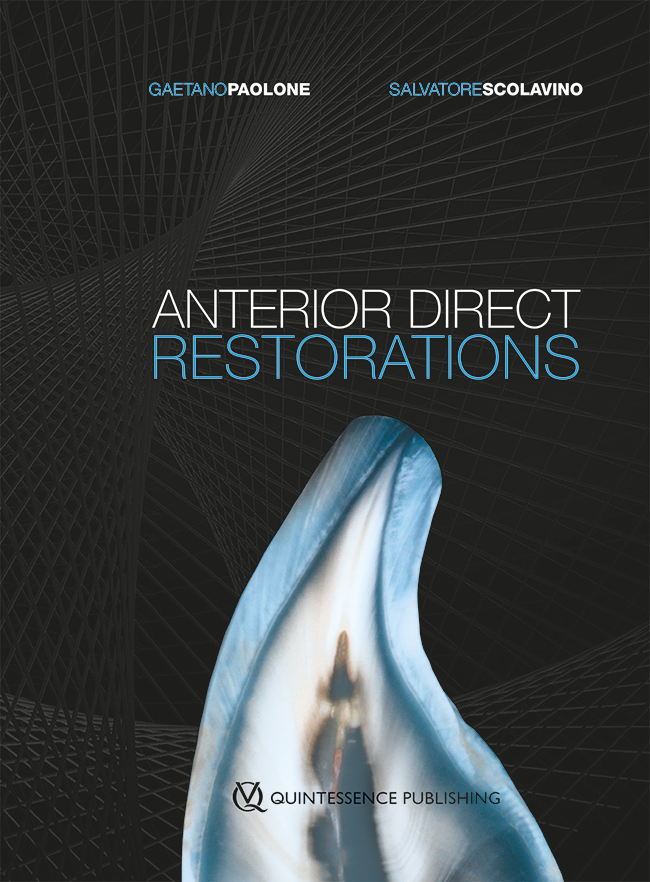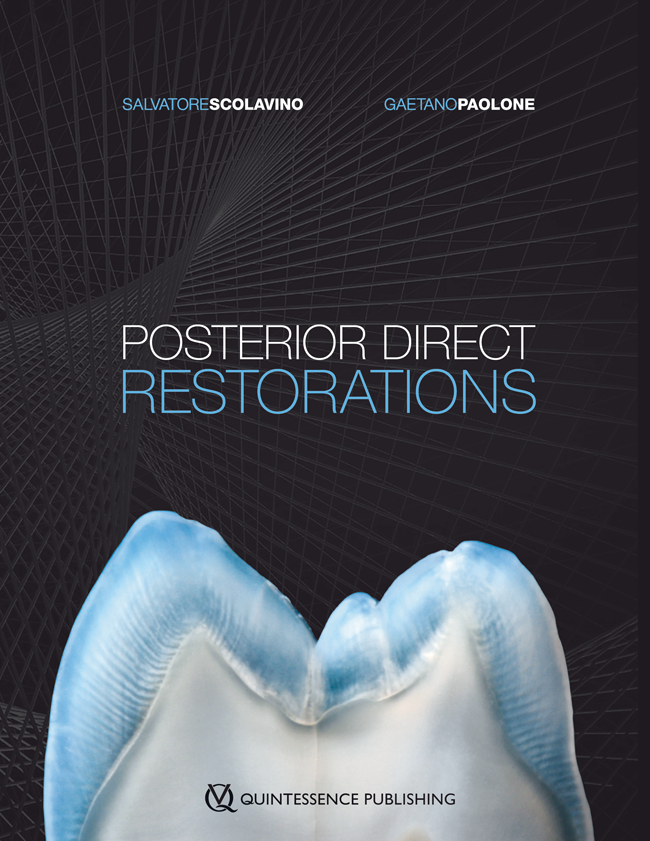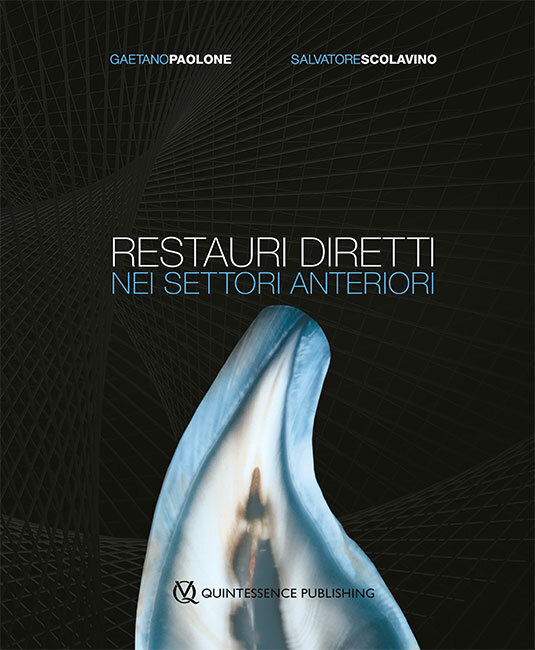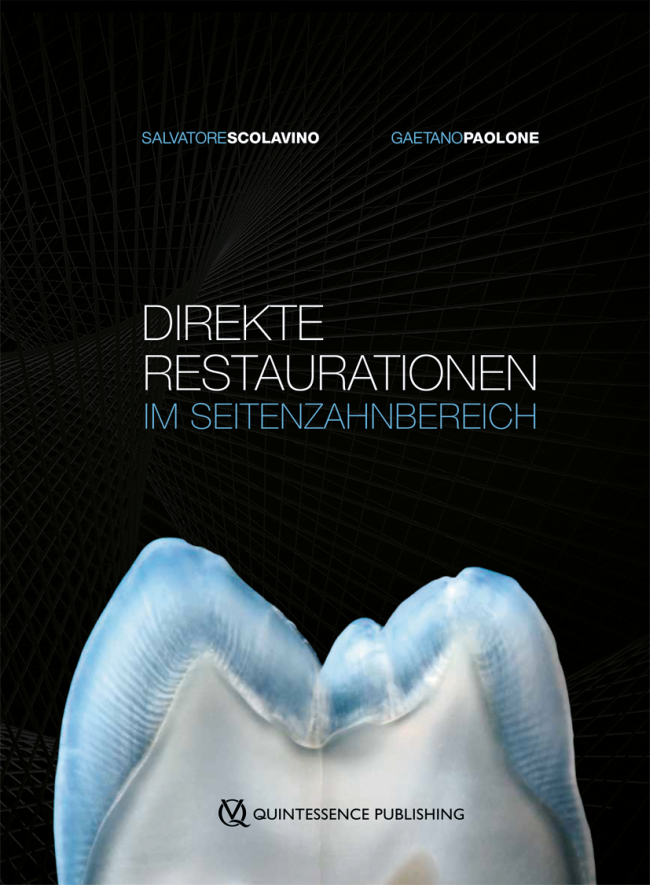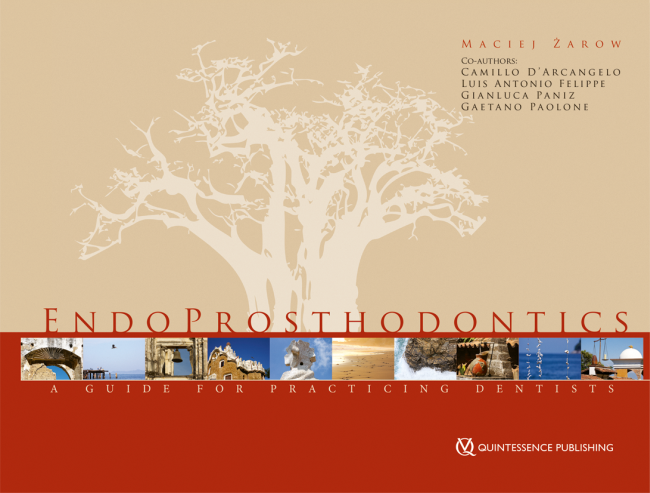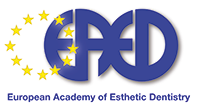The Journal of Adhesive Dentistry, 1/2024
Acceso libre Sólo en líneaResearchDOI: 10.3290/j.jad.b5759489, ID de PubMed (PMID): 39397757octubre 14, 2024,Páginas 223-230, Idioma: InglésBaldi, Andrea / Rossi, Tommaso / Comba, Allegra / Monticone, Luca / Paolone, Gaetano / Sannino, Isabella / Vichi, Alessandro / Goracci, Cecilia / Scotti, NicolaPurpose: To evaluate interfacial three-dimensional adaptation and internal voids of different flowable materials before and after cyclic fatigue in a simulated deep-margin elevation scenario. Methods: Eighty (n = 80) extracted premolars were selected and two Class II cavities were prepared. The mesial one with cervical margin 1 mm above the cementum-enamel junction (CEJ) and the distal one with cervical margin 1 mm below the CEJ. After performing adhesive procedures, specimens were divided into four groups according to the employed materials for 2 mm horizontal deep-margin relocation: nanohybrid composite (Clearfil ES2, Kuraray); conventional viscosity flowable composite (Tetric Flow, Ivoclar); medium viscosity flowable composite (Majesty ES2 Low Flow, Kuraray); high viscosity flowable composite (Majesty ES2 Super Low Flow, Kuraray). All restorations were finalized by oblique layering with nanohybrid composite (Clearfil ES2, Kuraray). To reveal interfacial and internal gap progression, specimens were scanned with a micro-CT (SkyScan 1172), before and after 500,000 cycles of mechanical chewing simulation (50 N, 1 Hz). Data were imported into Mimics software after smoothing and region growing. Only the 2 mm margin relocation volumes were considered. Obtained masks were analyzed for noise removal and volume calculation. At baseline, interfacial gap progression and internal voids, expressed in mm3, were collected and statistically analyzed with two-way ANOVA (α 0.05) for the variables substrate and restorative materials followed by Tukey post-hoc test. An additional two-way ANOVA test, followed by Tukey post-hoc test, was performed to evaluate variation in interfacial gap progression after mechanical aging. Results: At baseline, the ANOVA test showed a significant difference for the variable restorative materials (p = 0.01). More specifically, the Tukey post-hoc test revealed that the highly filled medium viscosity composite performed better than the conventional viscosity composite at baseline for the interfacial gap. The internal voids ANOVA test at baseline reported no significant differences for the variable tested. Analysis of variance for internal gap progression after thermocycling showed no differences for both substrate and restorative material employed. Conclusions: Highly filled medium viscosity composite performed significantly better than the conventional viscosity flowable composite for what concern baseline interfacial gaps. Artificial aging with a chewing simulator and thermocycling did not affect interfacial gap progression on enamel and dentin. The tested restorative materials performed equally after aging.
Palabras clave: 3D interfacial gap, adhesive interface, chewing simulator, highly filled flowable composites, internal voids, mechanical aging, micro-CT
The Journal of Adhesive Dentistry, 1/2023
Acceso libre Sólo en líneaClinical ResearchDOI: 10.3290/j.jad.b4043039, ID de PubMed (PMID): 37093568abril 24, 2023,Páginas 87-97, Idioma: InglésComba, Allegra / Baldi, Andrea / Carossa, Massimo / Paolone, Gaetano / Stura, Ilaria / Migliaretti, Giuseppe / Scotti, NicolaPurpose: To retrospectively evaluate the clinical behavior of direct anterior composite restorations performed with a universal adhesive or with a three-step etch-and-rinse (E&R) adhesive.
Material and Methods: Patients were randomly treated with a three-step E&R adhesive (Optibond FL, Kerr) or a universal adhesive (Clearfil Universal Bond Quick, Kuraray Noritake) applied in E&R mode. All restorations were performed with a nanohybrid composite (ClearFil Majesty ES-2, Kuraray Noritake) by the same experienced operator. Two calibrated examiners evaluated the restorations using a dental mirror and explorer, in accordance with modified United States Public Health Service (USPHS) procedures. Clinical events were registered and classified as either failure (F), survival (SR), or success (S).
Results: 168 restorations were evaluated in 90 patients with an average follow-up period of 37.9 (± 22.9) months. A total of 132 restorations were performed on vital teeth, and 36 were performed on endodontically treated teeth (ETT). A total of 128 Class-IV and 40 Class-III restorations were performed. In 89 restorations, a three-step E&R adhesive was applied (14 Class-III and 75 Class-IV), while in 79, a universal adhesive was used (26 Class-III and 53 Class-IV, p = 0.0091). A Cox regression analysis was performed (p < 0.05) to analyze which factors were involved in the failure of the restorations, considering failure (F) as restorations that needed re-intervention at the follow-up period of 37.9 (± 22.9) months. No statistically significant differences were observed when considering parameters directly involved with the adhesives tested. Endodontically treated teeth were more prone to fractures (p = 0.0006) compared to vital teeth. Restorations made with universal adhesives failed by fracturing significantly more frequently (p = 0.0234), while restorations made on endodontically treated teeth had a significantly worse outcome (p = 0.0001). Restorations made on canines also failed significantly more frequently (HR = 3.8, 95% CI = 1.4–10.1, p = 0.0062).
Conclusions: Based on the obtained results, both the universal adhesive and the three-step E&R adhesive proved to be good treatment choices for direct anterior restorations after 37.9 (± 22.9) months of follow-up. Tooth vitality seems fundamental for the prognosis of a direct anterior composite restoration over time.
Palabras clave: anterior teeth, Class-IV, direct restoration, etch-and-rinse, universal adhesive
International Journal of Esthetic Dentistry (EN), 4/2017
ID de PubMed (PMID): 28983532Páginas 468-481, Idioma: InglésPaolone, GaetanoWhen planning a restoration, the color of the substrate should also be taken into account in order to achieve a satisfactory esthetic outcome. In some clinical situations, clinicians are asked to hide the substrate with the restoration; in other situations, clinicians can take advantage of an unaltered color substrate and therefore select less opaque materials that exploit the color of the underlying tissue.
International Journal of Esthetic Dentistry (DE), 4/2017
Páginas 460-473, Idioma: AlemánPaolone, GaetanoUm ein zufriedenstellendes ästhetisches Resultat zu erreichen, sollte bei der Planung einer Restauration auch die Farbe des Substrats (Untergrund, Basis) berücksichtigt werden. In manchen Situationen muss das Substrat mithilfe der Restauration verborgen werden. In anderen Behandlungssituationen, in denen das Substrat keine veränderte Farbe hat, kann die Restauration mit weniger opakem Material ausgeführt werden, sodass die Vorteile der darunterliegenden Hartsubstanz zum Tragen kommen.
International Journal of Esthetic Dentistry (EN), 1/2016
ID de PubMed (PMID): 26835524Páginas 58-81, Idioma: InglésScolavino, Salvatore / Paolone, Gaetano / Orsini, Giovanna / Devoto, Walter / Putignano, AngeloDirect posterior restorations represent a widespread procedure in daily practice. Occlusal layering is often considered a complex task, generally not predictable and often requiring several occlusal adjustments. Moreover, direct posterior restorations are time consuming, as many small increments must be applied and cured individually to control shrinkage stress. Several authors have proposed different material layering techniques for posteriors. The authors of this article propose a simplified approach, which primarily aims to help the clinician perform quick, simple, predictable, and natural-looking occlusal modeling, reducing the need for occlusal adjustments.
International Journal of Esthetic Dentistry (DE), 1/2016
Páginas 56-80, Idioma: AlemánScolavino, Salvatore / Paolone, Gaetano / Orsini, Giovanna / Devoto, Walter / Putignano, AngeloDirekte Seitenzahnrestaurationen werden in der täglichen Praxis häufig durchgeführt. Die okklusale Schichtung gilt allgemein als komplexer Arbeitsschritt, dessen Ergebnis schwer vorhersagbar ist und bei dem häufig okklusale Korrekturen notwendig werden. Zudem sind direkte Seitenzahnfüllungen zeitraubend, da viele kleine Inkremente eingebracht und separat polymerisiert werden müssen, um die Schrumpfungsspannungen gering zu halten. Verschiedene Autoren haben unterschiedliche Techniken für die Materialschichtung bei Seitenzähnen vorgeschlagen1-8. Die Autoren dieses Beitrags stellen ein vereinfachtes Konzept vor, das dem Zahnarzt in erster Linie dabei helfen soll, Okklusalflächen schnell, einfach, vorhersagbar und mit einem natürlichen Aussehen zu modellieren. Gleichzeitig werden die notwendigen okklusalen Anpassungen reduziert.
International Journal of Esthetic Dentistry (DE), 2/2014
Páginas 176-194, Idioma: AlemánPaolone, Gaetano / Orsini, Giovanna / Manauta, Jordi / Devoto, Walter / Putignano, AngeloEin zuverlässiges System für die Farbnahme bei direkten Kompositrestaurationen zu finden, ist für den klinischen Behandler oftmals eine Herausforderung. Die Autoren dieses Beitrags analysierten mehrere auf dem Markt befindliche Farbskalen für Kompositrestaurationen und fanden folgende Einschränkungen: unübliche Materialstärke der Proben; Proben nicht aus dem Material, aus dem der Kliniker den Zahnersatz herstellt; nur selten können Schmelz- und Dentinfarben übereinandergelegt werden. Anschließend untersuchten die Autoren die Zuverlässigkeit eines Systems, bei dem standardisierte Farbskalenproben mit anatomischer Zahnform selbst gefertigt werden. Bereits kleine Veränderungen der Materialstärke des Schmelz- Komposits können die ästhetischen Ergebnisse deutlich verändern. Die Ergebnisse zeigten, dass alle Proben, die mit diesem System hergestellt wurden, eine vergleichbare Materialstärke des Schmelzes in allen untersuchten Bereichen (zervikales, mittleres und inzisales Drittel) aufwiesen.
International Journal of Esthetic Dentistry (EN), 2/2014
ID de PubMed (PMID): 24765625Páginas 164-182, Idioma: InglésPaolone, Gaetano / Orsini, Giovanna / Manauta, Jordi / Devoto, Walter / Putignano, AngeloFinding reliable systems that can help the clinician match the color of direct composite restorations is often an issue. After reviewing several composite shade guides available on the market and outlining their main characteristics and limits (unrealistic specimen thickness, not made with the same material the clinician will use, only a few allow to overlap enamel tabs on dentin ones), the authors evaluated the reliability of a system designed to produce self-made standardized "tooth-shaped" shade guide specimens. Small changes in composite enamel thickness may determine huge differences in esthetic outcomes. In conclusion, the results showed that all the specimens demonstrated comparable enamel thickness in all the examined areas (cervical, middle, incisal).
International Journal of Esthetic Dentistry (DE), 1/2014
Páginas 14-27, Idioma: AlemánPaolone, GaetanoBei direkten Frontzahnrestaurationen spielt insbesondere bei den zentralen Schneidezähnen die Symmetrie eine wichtige Rolle. Mithilfe von Silikonschlüsseln, die auf einem Wax-up basieren, kann der Behandler die palatinalen und inzisalen Bereiche aufbauen. Werden jedoch symmetrische Merkmale wie das approximale Emergenzprofil, die Beschaffenheit der Makro- und Mikrooberflächen sowie die Farbeigenschaften in der Freihandtechnik in der Praxis reproduziert, ist das Ergebnis oft nicht vorhersagbar. Im vorliegenden Artikel wird Schritt für Schritt eine Klasse-IV-Restauration beschrieben sowie ein einfaches Verfahren zur Reproduktion, Kontrolle und Korrektur von symmetrischen approximalen Konturen und Farbmerkmalen vorgestellt.
(Int J Esthet Dent 2014;9:14-27)
International Journal of Esthetic Dentistry (EN), 1/2014
ID de PubMed (PMID): 24757696Páginas 12-25, Idioma: InglésPaolone, GaetanoIn direct restorations of anterior teeth, particularly central incisors, symmetry plays an important role. The clinician can take advantage of silicone indexes based on a wax-up to build palatal and incisal walls; however, when he has to reproduce free-hand chair-side symmetrical items like interproximal emergence profiles, macro- and microsurface textures, and chromatic characteristics, the result can often be unpredictable. A step-by-step class IV restoration treatment will be described, as well as a simple procedure to help reproduce, check and correct symmetrically interproximal wall contours and chromatic characteristics.





